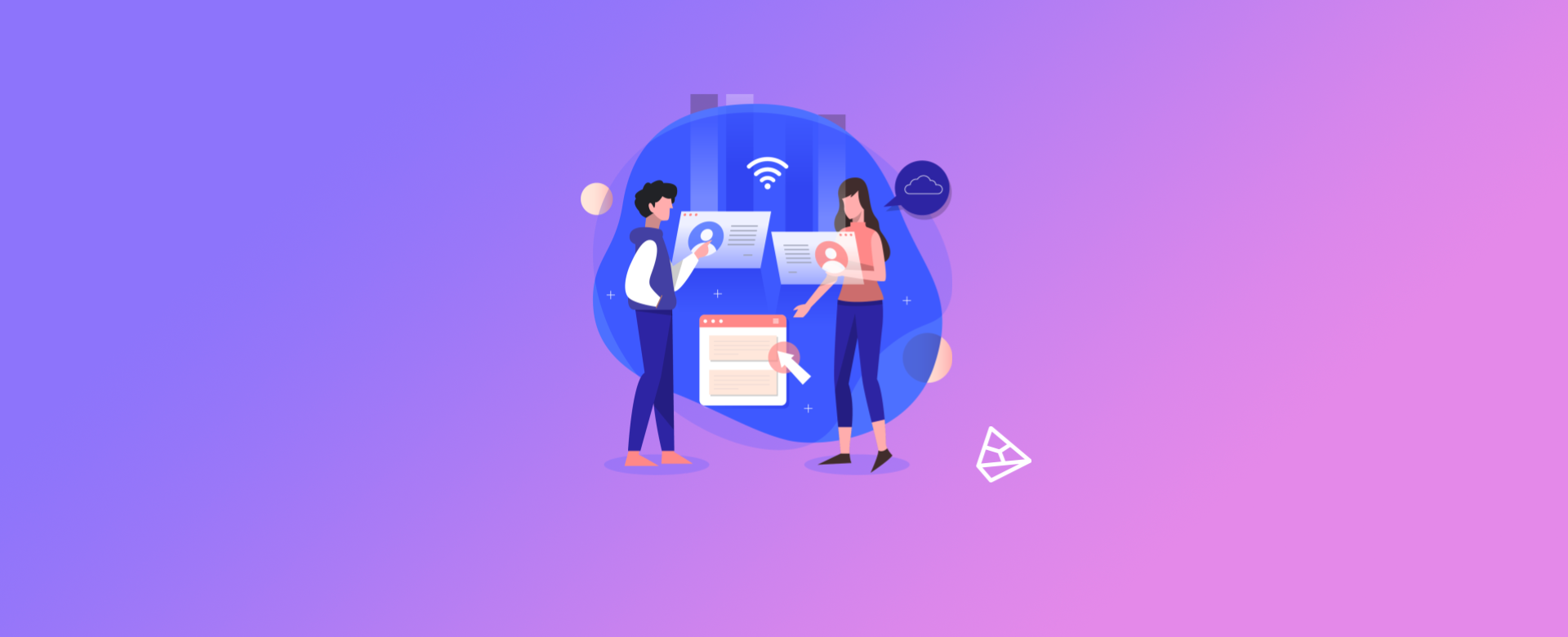
Inbound Marketing: This article was written by Yasmin Peixoto, from Fluxo Consultoria, a Junior Engineering Company at UFRJ, a partner of Pareto Group.
Marketing has always sought ways to improve the relationship between companies and their customers. In this sense, the "new marketing", known as Inbound Marketing, has been gaining fans for its knowledge-sharing bias. In this article we look at the best ways to apply it, since providing quality content makes you take on the role of someone who provides help and adds value when people need it most.
"A simple way to sell something to a customer in the future is to ask their permission in advance."'' -Seth Godin
Inbound Marketing vs. Outbound Marketing
First of all, we can compare the way in which the marketing we already know (Outbound Marketing) is structured with the one that is beginning to take hold in the market (Inbound Marketing). Basically, Inbound is all the actions that make the consumer come to the company and Outbound is exactly the processes that take the sales team to the consumer.
While Outbound directly provides products or services, often objectively stating the characteristics and price, contrary to what is also known as the BENVACA methodology; Inbound, long before presenting what is being sold, offers quality content about the item in question, with the aim of informing the visitor and gaining their interest through curiosity about the knowledge they can acquire related to what they want. In this way, a Buying Journey is established, in which you educate the customer little by little about what is on offer until they are as prepared as possible for the purchase.
Look at how clever this new strategy is: you'll be spending your sales team's effort only on those who could actually be potential buyers, instead of reaching a lot of people with an advertisement, for example, in which far fewer will actually be interested. In Inbound Marketing, you attract and invite those who are already looking for subjects related to what you offer (they come mainly through Google's organic search, arriving at the blog where the content is presented). In Outbound, on the other hand, you usually interrupt the consumer (in the example of the advertisement, who would be watching a program they like), "pushing" the product or service. For this reason, the new marketing we're talking about is also known as permission marketing.
It's worth noting that because Inbound invests in those who already have an interest, while Outbound invests in a large audience that few will be attracted to, the former ends up being much cheaper. In addition, a blog allows the reader to interact with the person who publishes it, which even allows for a real-time review of strategy based on the analysis of results, something that is not possible with Outbound actions.
Get the best out of Outbound and Inbound Marketing
It's not because the new trend of Inbound Marketing offers so many advantages that we can ignore Outbound Marketing, which has been used for so long. Advertising, active prospecting and Google AdWords are still good ways of bringing in customers, if they are well planned, especially when the sales cycle or average ticket for the good being marketed is higher, which makes it worth a larger investment.
We at Fluxo Consultoria recommend Inbound Marketing mainly for small and new companies, as it is a way of reducing the cost of acquiring customers intelligently, and the work done can be used for a long time afterwards. A good friend of mine, Jorge Duarte, often gives a very good example to make an analogy with this issue: think of a famous footballer and a famous writer. Now look - while the player's salary is proportional to the hours worked, the writer's income comes from book sales, even years after the material has been completed. What we mean is that Inbound Marketing works in the same way, allowing your company to be found months after the publication of an e-book and guaranteeing a continuous flow of qualified customers.
The stages of the Buying Journey
To know what kind of content we are going to create for our visitors, we need to understand what goes through their minds during the buying process, known as the Buying Journey, which can be summarized in the following stages:
1-Knowledge: (Recognizing the problem)
It consists of the first moment: the customer is attentive, trying to find out more about the subject they are looking for. This is the stage at which, by reading the content, they will learn more about the topic they are researching and realize a problem they have or an improvement they can make. Here, you need to provide basic and more general information.
2-Consideration of the solution:
Once interest has been aroused, the consumer will now seek to delve deeper into what they have seen. At this stage, you need to finish clarifying how the benefits shown will meet their needs, aligning expectations by offering, at this point, the product or service that will be the solution, because this is where they will assess whether it will be ideal for them or not. It's interesting to offer free tests or samples. In the case of Fluxo Consultoria, for example, we offer a technical and commercial proposal with a free quote.
3-Buy: (raises hand)
This is the moment when the customer takes action to fulfill their desire. At this stage, you need to provide guidance and details for closing before the lead gets cold.
Sales funnel in permission marketing
The Sales Funnel is how the Buying Journey is characterized in Inbound Marketing. The top of the funnel represents the visitors who are coming to your blog, while the bottom of the funnel symbolizes the customers who make the purchase. See below for a simplified diagram:
To attract, you need to know the characteristics and needs of the audience you want to reach. This is the basis for developing the content, while always making sure that the focus is maintained.
Conversion consists of turning a person who comes to your blog a few times into a reader who follows you all the time. Here, implementing calls to action and developing landing pages is important.
So far, you've given readers tips and even solved a few small problems, because you've mapped out their difficulties in order to write the content initially. Now you need to turn them into customers. To do this, you need to focus on convincing them that buying your product or service will solve all their problems.
Just because you've made a sale doesn't mean you should stop there. It's essential to continue to maintain a good relationship with the customer, so that they can come back again and again and promote your brand to other people. If you want to understand more about how to assess whether a customer is a promoter.
Content Marketing and its elements
Content marketing is nothing more than the way in which you create the information delivered to the customer in your Inbound Marketing strategy so that it is relevant and attractive to generate action from them.
In addition to blog posts, there are other interesting options you can count on, such as:
- Send e-mail marketing according to a customer's click on a call to action that you have left to take advantage of the opening moment and extend the relationship. For example: if the customer has clicked on a button to download an e-book by leaving a contact, sending an e-mail offering help with questions is a very nice gesture;
- Send weekly newsletters with information that may be of interest to them;
- Use resources such as infographics, videos and podcasts to make following your pages more enjoyable, as audiovisual items are more attractive to people than text;
- Producing e-books and making them available for download in exchange for the client's e-mail address, deepening the content of posts, covering topics in a complete way (which even brings you closer to being an expert on the subject);
- Organize webinars, which are basically live online presentations, allowing the audience to interact through questions.
It's also worth remembering that being present on social media is essential and you should associate them with the content produced on your blog, both by linking to the blog's content on them and by placing the interaction buttons with them on your blog posts (e.g. share). In this way, you expand the ways in which you advertise, bringing more people to your pages.
Speaking of linking, it is of the utmost importance to get it right. Try to link more and more to other posts of yours than to external sites, as this increases the time visitors spend on your blog and their interaction with it.
Finally, if you want to give your brand more credibility, try to display mentions of your company in the media and testimonials from clients who have enjoyed your work. It's also a good idea to guest post on other blogs, so you can gain a new audience.
Your comments are very important so that we can produce increasingly relevant and rich content, so don't forget to comment with criticisms, suggestions or compliments. Also, don't forget to sign up for our newsletter, so we can let you know whenever we have a new article that interests you.


















